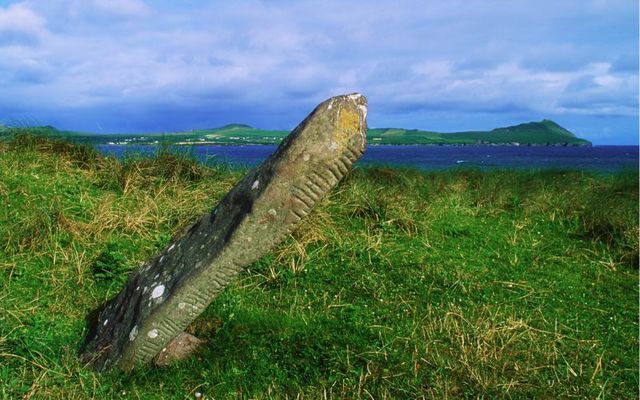A small stone carved with the ancient Celtic script, Ogham, possibly dating back to the 4th century was discovered by a geography teacher in Coventry, England, while he was digging up a garden.
Archaeologists are attempting to understand the full meaning of a small rock discovered in Coventry in 2020. Geography teacher, Graham Senior, was wedding in his garden when he came across the stone etched with the ancient Irish script of Ogham.
Ogham is primarily used to write the early Irish language, as well as other Celtic languages. It consists of a series of strokes or notches carved on stone or wood. Each character represents a letter or a phoneme in the Celtic languages.
Ogham inscriptions are found primarily in Ireland and western Britain and date back to the Early Medieval period, though the script itself may have originated earlier. Ogham stones, often inscribed with names or short messages, are important archaeological and linguistic artifacts that provide insight into the languages and cultures of ancient Celtic peoples.
Senior told the Guardian “I was just clearing a flowerbed of weeds and stones when I saw this thing and thought, that’s not natural, that’s not scratchings of an animal. It can’t have been more than four or five inches below the surface.”
Archaeologists in the central England city of Coventry are trying to ascertain the full meaning of this 2020 find.
Finds Liason Officer for Staffordshire and West Midlands told the BBC "It's an amazing find, we're very lucky."
She added: "Most Ogham inscriptions you generally find in the more Celtic areas - Scotland, Ireland and down in Cornwall - you don't generally get them down in the Midlands."
The discovery of a 1,600-year-old Ogham stone in England has been described as an "absolutely amazing" find by an archaeologist.https://t.co/0J1y8w1YZd
— RTÉ News (@rtenews) May 9, 2024
The lucky geography teacher said he had a "fair idea" what the stone was when he unearthed it. Sadly, when he tried to confirm his suspicions he hit a brick wall.
Thankfully, Katherine Forsyth from the University of Glasgow visited Senior with a researcher.
Forsyth and her team partially translated to the writing on the stone to reveal the name "Mael Dumcail".
Senior's theory is that the unique stone was a keepsake of a Roman soldier. The Romans were in Coventry, England, during the Roman occupation of Britain, which lasted from around AD 43 to AD 410. Coventry, known as "Coriovallum" during Roman times, was likely a settlement.
The small sandstone rock measures 11cm (4 inches) and is believed to have been carved between the 4th and 6th centuries.
Finds Liason Officer Gilmore told the BBC that another theory is that it may have been a means for Irish tradesmen to make contact with each other.
She told the Guardian the stone could be linked to people coming over from Ireland or to early medieval monasteries.
“You would have had monks and clerics moving between the different monasteries," Gilmore said.
She added that the name "Mael Dumcail" poses more questions than answers but she hopes that, in time, the stone will be fully translated and more will be revealed.
The stone will be displayed at the Herbert Art Gallery and Museum in Coventry, as part of a free exhibition "Collecting Coventry".




Comments